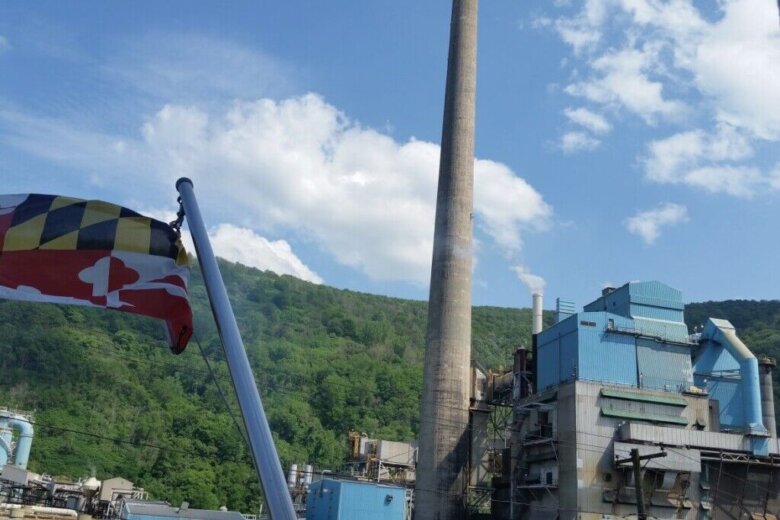This article was republished with permission from WTOP’s news partners at Maryland Matters. Sign up for Maryland Matters’ free email subscription today.
This content was republished with permission from WTOP’s news partners at Maryland Matters. Sign up for Maryland Matters’ free email subscription today.
Around 35% of Maryland’s “clean energy” in 2020 came from controversial renewable energy sources such as trash incinerators, landfills and woody debris burned in power plants and paper mills, according to a recent report.
After reviewing records from the Maryland Public Service Commission, an environmental advocacy group called the Public Employees for Environmental Responsibility (PEER) found that Maryland utility companies paid $36 million for “renewable energy credits,” or RECs, from trash incinerators, landfills and paper mills that burn black liquor and wood waste for energy.
Maryland set up the Renewable Energy Portfolio Standard (RPS) in 2004 to encourage a gradual transition to clean energy, requiring energy companies to subsidize solar, wind and other clean energy sources through purchasing a specific percentage of renewable energy credits every year or pay a fee. At least some must come from solar and wind produced in the state.
A renewable energy credit represents a given amount of electricity that has been generated from renewable energy sources. When companies produce that renewable power, they get RECs that they can sell to others. This means that a utility company producing energy from gas or coal can purchase renewable energy credits from out-of-state facilities to reach the state’s Renewable Energy Portfolio Standard.
In 2019, the General Assembly passed a measure that mandated the state to get half of its electricity from renewable energy sources by 2030.

At issue are some of the sources that are classified as clean energy under state law. Energy made from trash incinerators, poultry litter, food waste, paper mills and landfills are currently listed alongside wind and solar as a “Tier 1” clean energy source by the state and qualify for state tax breaks. “Black liquor,” a byproduct of paper production, was removed from the state’s top renewable energy tier under the Renewable Energy Portfolio Standard last year.
Whenever Maryland utility companies purchase renewable energy credits, the cost trickles back down to the consumer, said Tim Whitehouse, the executive director of PEER. He contended that Marylanders paid more for dirty energy sources like biomass than clean energy sources like wind.
In 2020, the aggregate cost of a solar credit was around $66 and $8.56 for a wind credit, according to PEER’s report. The aggregate cost of a credit from paper facilities burning wood was $10.22 and $7.99 for an energy credit produced by trash incinerators.
Environmental advocates and several lawmakers argue that energy made from trash and biomass are “dirty” sources of energy, as some of these facilities have bad environmental records and release methane, which traps 80 times more heat in the atmosphere than carbon dioxide over a 20-year period, which contributes to global warming.
Methane is produced in landfills when organic waste inside — such as food scraps and grass clippings — decomposes. Anaerobic digesters also produce methane by breaking down food or animal waste, but contains the gas rather than releasing it into the air like landfills do.
“Maryland ratepayers should not be responsible for the failing finances of yesteryear’s dirty energy sources,” Lily Hawkins, Maryland Organizer with Food & Water Watch, said in a statement. “Maryland needs to clean up its act and remove polluting energy sources from our state’s renewable portfolio standard.”
According to PEER’s report, Maryland energy providers paid more than $129 million to buy renewable energy credits from “dirty” energy facilities in Virginia and $60 million from companies in Maryland since 2008. The report also projects that between 2008 and 2030, Maryland will spend half a billion dollars subsidizing dirty energy sources under the state’s Renewable Energy Portfolio Standard.
“Maryland could have invested a half a billion dollars into climate programs in Maryland that made a real difference to Maryland residents, but instead chose to subsidize dirty energy sources — many of which provide no energy to Maryland and is as bad or worse for the environment as fossil fuels and provide no jobs for Maryland residents,” Whitehouse said in an interview.
This year, some lawmakers are taking steps to clean up the state’s Renewable Energy Portfolio Standard. Del. Vaughn Stewart (D-Montgomery) is sponsoring a bill that would remove energy production from landfills, trash incinerators, burning wood, anaerobic digesters and animal waste from the state’s definition of clean energy that qualify for state tax breaks.
“You have this perverse situation where every time you pay your Pepco bill, you’re actually paying more so that we can subsidize sources that the vast majority of experts would not consider clean or renewable, but we define that way in state law,” Stewart said.
“This bill will once and for all turn off this pollutant spigot,” he continued.
Stewart said the state’s current Renewable Energy Portfolio Standard is flawed because it subsidizes facilities that emit greenhouse gas emissions, which hampers the state’s climate goals and does not produce new jobs in Maryland since most of the renewable energy credits come from out-of-state facilities.
For instance, Maryland utility providers spent more than $26 million between 2014 and 2020 purchasing energy credits from a facility in Virginia that burns wood waste from logging operations to produce electricity for Virginians, according to PEER’s report. Virginia excluded biomass facilities as a renewable energy source in 2020, forcing the facility to sell its energy credits to states that accept it like Maryland, Whitehouse said.
While Maryland’s law requires power providers to purchase renewable energy credits from solar and wind companies operating in Maryland — which helps create state jobs — state law does not require the same for other industries. This means that operators like Virginia’s biomass facility can be subsidized without providing any direct benefit to Marylanders. State law also not require facilities producing energy credits to provide electricity to Maryland customers.
“There’s no oversight as to whether these companies have good [environmental] compliance records or whether there’s even any energy produced for the grid,” Whitehouse said.
Sen. Michael Hough (R-Frederick) and six other senators from both sides of the aisle are also sponsoring a bill that would remove trash-to-energy plants from the state’s Renewable Energy Portfolio Standard.
Hough has worked for years to remove the fuel from two trash incinerators — one in the city of Baltimore operated and the other in Dickerson — from the state’s classification of clean energy that qualify for tax breaks. The Wheelabrator, Baltimore’s trash incinerator, is considered to be the biggest source of air pollution in the city by many experts.
But Hough’s efforts have faced political opposition in the past. Last year, Hough tried to attach an incinerator amendment to the bill that removed “black liquor” from the state’s Renewable Energy Portfolio Standard, but Democratic lawmakers said it was too big of an issue to be attached to another bill.







